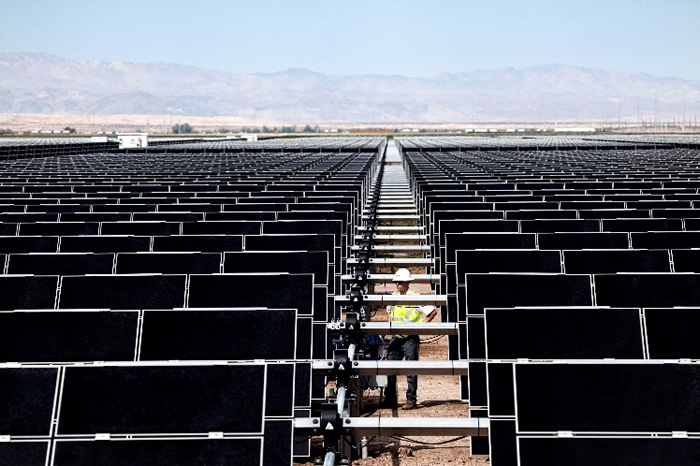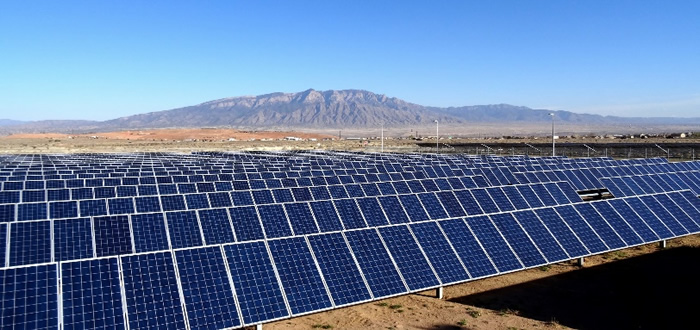As PV plants come out of warranty from the installer, an understanding of what needs repair, when, and how to do it is just as important as what equipment was selected and how it was installed.
Joe Brotherton | MaxGen Energy Services
As price pressure continues to shape the utility-scale PV market, there is a growing focus on understanding and fine tuning the long-term costs of managing these plants through the life of the PPA. Operations and maintenance (O&M) is playing a growing role in the financial modelling of a prospective PV plant as real world data from aging PV plants returns from the field. As PV plants come out of warranty from the installer, an understanding of what needs repair, when, and how to do it is just as important as what equipment was selected and how it was installed.
One component that has been a focus of recent debate is the racking or tracking system and how it is maintained over time. As an independent O&M provider in the utility-scale PV market, MaxGen Energy Services (MaxGen) has been asked many times to evaluate the long term O&M costs on a fixed-tilt racking system versus a single-axis tracking system. MaxGen currently has over 300MW under its management. About 80%, or 240 MW total, consists of Array Technologies, Inc. (ATI) single-axis tracking system. The obvious benefit we see is an average 20% gain in production over a fixed system, depending on location and a host of other factors. The most commonly asked question we hear on this on this subject is, “What is the long term O&M cost for a tracker, and how does it compare to a comparable fixed system?”
ATI’s tracking system is the clear US market leader in the tracking space today. Looking at the design & engineering package for ATI, as well as the maintenance requirements of the system and advances in remote diagnostics, controls and alarms, MaxGen has concluded that the O&M cost of an ATI tracking system is less than 2% more than a comparable fixed racking system.

Regardless of the site or mounting system, O&M services have to incorporate visual inspections of every component and every module in a given system. The ATI design has allowed us to streamline our inspection process. We are able to walk a tracker block and inspect the major components of the ATI system thoroughly and efficiently. The requirements to maintain the ATI warranty are minimal. An area that offsets a potential cost increase is in the ability to stow modules in an optimal position during module washing. MaxGen tries to preserve and maximize the production of our plants, so we have found ways to wash our modules at night, or early in the morning, when we can stow the modules after production times, via remote control from our offsite operations center, thereby minimizing gaps in the day when the modules are in a flat and less optimized power production angle. This also allows for easier handling of the arrays as they are at human height, as opposed to high north-side fixed tilt racking systems.

If we take kWh production as the baseline comparison, a 20MWdc single-axis tracker system and a 24MWdc fixed-tilt system – in central California using central inverters and similar wiring techniques – produce about the same amount of annual kWh production. From the O&M perspective, the 20MWdc tracker system will have a preventive maintenance plan cost of about $0.011 per watt/dc ($11k/MWdc) per year. The same preventive maintenance plan on a fixed-tilt 24MWdc system would be about $0.0108 per watt/dc ($10.8k/MWdc) per year. Calculations can be made based on the PPA rates and other outside cost factors to determine if the increased dollar amount of the fixed-tilt O&M plan are worth the lowered overall system size using the tracker. The increased up-front capital costs of installing more PV dc watts, as well as additional AC inverters, for the fixed-tilt system are also a significant factor in the economics of a side-by-side comparison (see table below).

Disclaimer: Not all PV power plants are created the same and every project will have designs and equipment specific to the site criteria under which the plant will be constructed and financed. This is the opinion of MaxGen in evaluating long term O&M plans and being able to advise on long-term solutions. MaxGen also works very closely with the ATI service team and is trained on working with ATI’s tracking system.
About MaxGen Energy Services
 MaxGen Energy Services, LLC is an independent, third-party, power plant service provider for all operating life stages of power plants. MaxGen’s independence allows the company to work with a broad spectrum of technologies and across the solar value chain for companies such as banks, EPCs, owners, developers and utilities. With its main office located in Concord, CA, MaxGen has a nationwide presence of service technicians and partners. For more information visit: http://maxgenservices.com/
MaxGen Energy Services, LLC is an independent, third-party, power plant service provider for all operating life stages of power plants. MaxGen’s independence allows the company to work with a broad spectrum of technologies and across the solar value chain for companies such as banks, EPCs, owners, developers and utilities. With its main office located in Concord, CA, MaxGen has a nationwide presence of service technicians and partners. For more information visit: http://maxgenservices.com/
The content & opinions in this article are the author’s and do not necessarily represent the views of AltEnergyMag
Comments (0)
This post does not have any comments. Be the first to leave a comment below.
Featured Product


